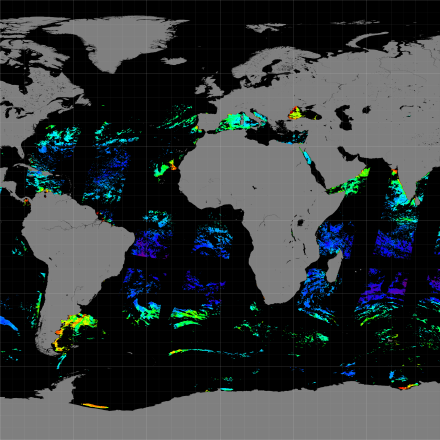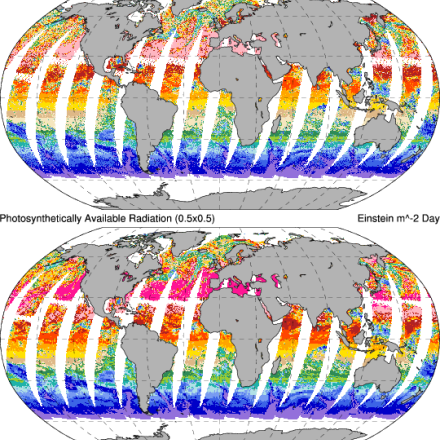SeaWIFS: ocean bio-optical and carbon properties

The purpose of the Sea-viewing Wide Field-of-view Sensor (SeaWiFS) Project is to provide quantitative data on global ocean bio-optical properties and to assess the oceans' role in the global carbon cycle. SeaWiFS data are being used to help clarify the magnitude and variability of chlorophyll and primary production by marine phytoplankton, and to determine the distribution and timing of spring blooms, i.e., the time of highly abundant growth. The orbiting sensor can view every square kilometer of cloud-free ocean every 48 hours. As such, the satellite-acquired ocean color data constitute a valuable tool for determining the abundance of ocean biota on a global scale and can be used to assess the ocean's role in the global carbon cycle and the exchange of other critical elements and gases between the atmosphere and the ocean.
Key Strengths
Key Limitations
Cite this page
Acknowledgement of any material taken from or knowledge gained from this page is appreciated:
National Center for Atmospheric Research Staff (Eds). Last modified "The Climate Data Guide: SeaWIFS: ocean bio-optical and carbon properties.” Retrieved from https://climatedataguide.ucar.edu/climate-data/seawifs-ocean-bio-optical-and-carbon-properties on 2025-12-14.
Citation of datasets is separate and should be done according to the data providers' instructions. If known to us, data citation instructions are given in the Data Access section, above.
Acknowledgement of the Climate Data Guide project is also appreciated:
Schneider, D. P., C. Deser, J. Fasullo, and K. E. Trenberth, 2013: Climate Data Guide Spurs Discovery and Understanding. Eos Trans. AGU, 94, 121–122, https://doi.org/10.1002/2013eo130001
Key Figures

SeaWIFS sample daily chlorophyll estimates [source: http://oceancolor.gsfc.nasa.gov/cgi/l3]

